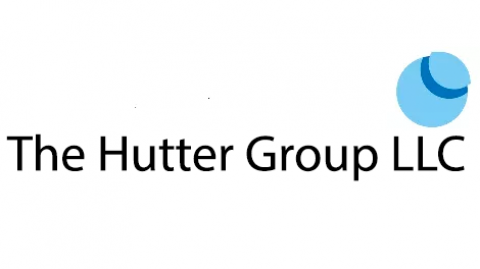
With more companies building open innovation into their product development platforms, there would appear to be increasing opportunities for companies and independent IP owners to sell or license their technology. In my many conversations with corporate innovation professionals, I find that that the desire to in-source externally developed products and technology may be strong, but few know how to go about finding and acquiring what their companies need. As I have written about before, developing fruitful open innovation relationships is very much like dating: you may want to do so, but unless you know where to show up, and how to initiate conversation, chances are you will remain single for a long time unless you engage a matchmaker.
Well, I guess you could be your own “matchmaker” and search for potential partners. This is easier today than it used to be because many corporations have idea submission portals and a few, like General Mills and Clorox, are even publicizing their detailed needs to the public. This is a lot like finding your own mate, however. You may show up someone all dolled up, but if your ideal mate isn’t also at the same place with the same message at the same time, you likely are never going to meet.
In this regard, in the open innovation space, there is no central source that categorizes and indexes all of the sites, and a look today or next week may mean you miss the one time your perfect match is in the room. If you are really not looking to enter into a partnership in the near future, then periodic review of these websites might be enough for you. But, if this is the case, you and your company need to admit that you are not really interested in open innovation or technology licensing because you can’t succeed on such an ad hoc basis other than by sheer luck. (Of course, there are many long term relationships that started with an unexpected meeting somewhere, I just don’t think you want to bet your business success on random events.)
It would be great if a large number of companies who were in the “open innovation scene” would publicize the fact to others who might be interested in meeting them. Unfortunately for those seeking the perfect match for their open innovation efforts, there is not the equivalent to a Match.com dating site where everyone who is pitching technology can be reviewed by everyone who is catching outside technology on an ongoing basis even after the bars are closed. But we are getting closer, as more and more resources become part of the open innovation marketplace. In this regard, I am a big fan of companies like Yet2.com, NineSigma and Innocentive as places where those seeking technology can put forth their technology needs for the public to see. Even more powerful is the fact that these companies can serve as the hub for a number of technology spokes. In other words, companies like Yet2.com, NineSigma and Innocentive can not only operate as matchmakers for technology seekers and solution providers, they can also be means to accelerate innovation among a number of different parties who would otherwise not know about the other.
And, it is not only these established open innovation companies that can connect technology owners to corporations wishing to accelerate their product development pipelines. I wrote sometime ago about patent attorneys being a potentially robust source of connecting their clients with potential licensees. The reason for this is very straightforward: patent attorneys know the ins and outs of their clients’ technology platforms, and are natural points of connection. Unfortunately, most patent attorneys care little about whether their clients create value from their patents; rather, they see their roles only as that of being the means by which their clients obtain patent protection. Whether the patent makes money for someone is not the patent attorney’s job. As one of the best patent attorneys I know said to me a couple of years ago: “When a client brings me a patent matter, I assume they have analyzed the value proposition, and have decided that they need the patent to serve their business interests.” In other words, even the most accomplished patent attorneys don’t involve themselves in their clients’ business matters, and I think this needs to change. This can change if patent attorneys start to look outside of their current narrow roles as patent procurement experts, and they can do this by monitoring the growing number of websites like Yet2.com, NineSigma, Innocentive that seek to facilitate open innovation relationships. And, clients should demand that their patent attorneys provide them with such value-added services.
The alternative to these open innovation marketplaces is the old fashioned way of reaching out to those one already knows. Certainly, a large company with a large supplier or customer network has a lot of potential contacts that can be tapped. This is like asking people in your personal network if they know someone nice you might like to meet: the timing has to be right, and it is unlikely that a proposed match made without consideration and thought will be fruitful. Like finding a partner in life, success in open innovation requires deep and greatly interconnected networks over those that are generally found in corporate settings. In short, if one is really serious about succeeding in open innovation, you have to let as many people as possible know that you are looking for to acquire outside technology. This cannot be accomplished by sitting in your office and hoping someone just happens to think of you in the right context, at just the right time. Rather, you have to get out and meet as many people as possible, and you have to interact with as many reputable technology marketplaces as you can, and you can’t be afraid of letting your needs be known to the outside world.
On this front, I like to attend conferences like the Open Innovation Summit, CoDev and Yet2.com conferences because, by definition, people who expend the effort to attend these meetings are looking for partners. LES can also be a great place to meet like-minded folks, but in my opinion, the people who belong to LES have not broadly adopted open innovation as a driver of their licensing strategies, so I don’t think those seeking to find partners should start in this traditional licensing environment.
Another recommendation is to understand that they most likely successful relationship is with a company that is outside your technology or product area. This will require some detective work, such as by reviewing patent filings and developing corporate intelligence. Patent filing data can serve as a great source of potential partners, and I strongly recommend that companies seeking to develop competencies in open innovation and out-licensing integrate patent filing data into their processes. While this is more work than just calling up someone you know to ask “are you interested or do you know someone?,” in my experience, I think the payback can be substantial.
For those who wish to learn more about how their organizations can find potential licensing partners, I will be participating in a webinar with Ben du Pont, CEO of Yet2.com and Jason Lye, Director of External Business Development at Newell-Rubbermaid on January 20. Registration information is here. (If you happen upon this blog post after this date, the webinar will be archived on the Yet2.com website.) In this webinar, we will be talking about marketing your technology to non-traditional players in the marketplace for technology. I look at “non-traditional players” as those who may not be experienced in the technology licensing. They might not even know that they have technology that others might find valuable, and who might be “reluctant brides.” Success with such non-traditional players often requires new negotiation strategies, and it can be very helpful to seek negotiation advice from those who have dealt with many disparate parties to licensing deals, as well who have been integral in closing many deals. I hope you find this webinar helpful, and feel free to let me know your thoughts.



As a patent guy, I’m glad to hear you say: “I strongly recommend that companies seeking to develop competencies in open innovation and out-licensing integrate patent filing data into their processes.”
In fact, a substantial number of patent attorneys that I’ve run across tell clients the exact opposite. I hear anecdotes all the time from employees who were instructed never to look at patents. But the willful infringement argument is just plain silly. I recently spoke to a company that told me the cost of litigation alone would bankrupt them … so then I asked, why do you care whether someone is suing you for $10 M or $30M?
I enjoy doing helping clients acquire patents from businesses that hadn’t previously considered licensing/monetization, but I never really thought of myself as a matchmaker. Maybe time to get new business cards. 😉